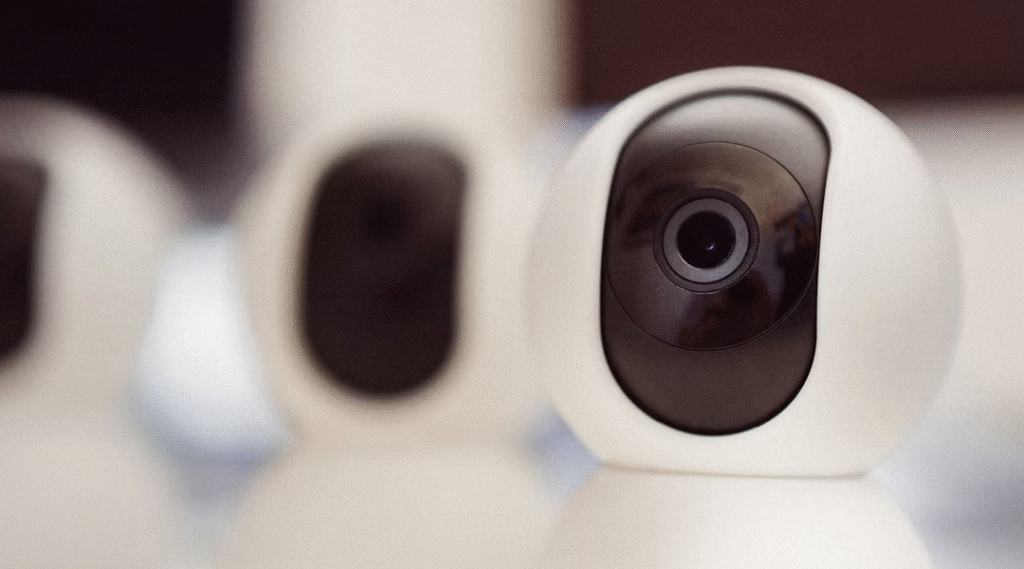The smart camera industry has undergone a dramatic transformation in recent years. Once limited to simple motion‑triggered home security devices, these cameras now span applications from enterprise surveillance and industrial quality control to smart‑city management and retail analytics. With the global market valued at over $6 billion in 2024 and forecast to double by 2032, companies must understand how this sector got here, what’s driving growth, and how to position themselves for victory in a crowded field.
The Evolution of Smart Cameras
Smart cameras trace their roots to the convergence of networked video surveillance (IP cameras) and advances in computer vision. Early devices simply digitized analog feeds for remote viewing. Gradually, inexpensive image sensors and compact processors enabled on‑device analytics—first basic motion detection, then rudimentary object recognition. Today’s smart cameras embed dedicated neural‑processing units capable of running deep‑learning models at the edge. This evolution has shifted the workload from centralized servers to the camera itself, cutting bandwidth costs and speeding response times.
Core Benefits Driving Adoption
- Precision Alerts: Advanced analytics now distinguish humans, vehicles, pets, and even specific behaviors—reducing false alarms by up to 80% compared to legacy systems.
- Operational Insights: In manufacturing, smart cameras monitor assembly lines in real time, spotting defects and halting production automatically to prevent costly recalls.
- Cost Efficiency: By offloading image processing from the cloud to the edge, companies can slash network expenses by 30%–50% and avoid video‑storage bottlenecks.
- Actionable Data: Retailers leverage foot‑traffic heat maps to optimize store layouts, while city planners use vehicle‑count analytics to adjust signal timings and ease congestion.
These benefits extend well beyond perimeter security, fueling rapid expansion into new verticals.
Unpacking Market Trends
Several forces are converging to accelerate smart‑camera adoption:
- Edge‑AI Proliferation: Camera manufacturers now integrate specialized AI chips, enabling real‑time object detection, face recognition, and behavior analysis on-device.
- Subscription‑Based Services: To stabilize revenue, vendors increasingly bundle hardware with cloud analytics, extended‑storage plans, and live‑monitoring subscriptions, creating recurring‑income streams.
- Vertical Specialization: Demand in sectors like healthcare, logistics, agriculture, and smart cities is growing faster than traditional home‑security deployments, encouraging tailored solutions.
- Open Standards & Interoperability: Adoption of protocols such as ONVIF and the emerging Matter standard ensures smart cameras play nicely within broader IoT ecosystems.
Major Players and Their Strengths
No single company dominates the smart‑camera sphere. Key contenders include:
- Sony: Renowned for its high‑performance image sensors, Sony powers both consumer and professional cameras with superior low‑light and high‑dynamic‑range capabilities.
- Hikvision & Dahua: These two Chinese giants command a combined market share of roughly 40% in video‑surveillance hardware. They leverage vertical integration to offer competitively priced, full‑stack solutions.
- Axis Communications & Bosch: Focusing on premium, security‑certified products, these European firms target enterprise and critical‑infrastructure clients with robust cybersecurity and compliance features.
- Google Nest, Amazon Ring, Arlo: In the smart‑home segment, these brands lead on user experience—intuitive apps, seamless voice‑assistant integration, and straightforward subscription tiers.
Additionally, niche specialists like FLIR (thermal imaging) and Basler (industrial vision) address unique use cases, creating a rich tapestry of offerings.
Comparing Signature Products
| Brand & Model | Resolution | On‑Device AI | Cloud Dependency | Monthly Fee | Integration Ecosystem |
|---|---|---|---|---|---|
| Sony SNC‑VM772R | 4K | Basic edge analytics | Minimal | N/A | ONVIF, custom SDKs |
| Hikvision ColorVu Series | 1080p | Motion + line‑cross | Hybrid | Optional | Hik‑Connect, ONVIF |
| Axis P5635‑E PTZ | 1080p | Limited | Low | N/A | ONVIF, VAPIX |
| Nest Cam (Battery) | 1080p HD | Person/vehicle alerts | High | $6–12 | Google Home, Assistant |
| Arlo Pro 4 | 2K | Package, person, pet | Medium | $3–15 | Alexa, Google, Apple |
High‑end industrial cameras prioritize image fidelity and open integration, while smart‑home units compete on AI accuracy, ease of use, and service tiers.
Winning Tactics for Market Leaders
- Double Down on Edge AI: Investing in powerful, efficient neural‑processing units will enable more sophisticated analytics (e.g., behavioral anomaly detection) without cloud reliance.
- Broaden Subscription Offerings: Beyond basic storage and alerts, introduce value‑added services—predictive maintenance dashboards, compliance reporting, or AI‑driven trend analyses—to drive recurring revenue.
- Target High‑Growth Verticals: Cultivate solutions tailored to smart‑city traffic management, healthcare monitoring, or factory‑floor quality assurance, where advanced use cases command premium pricing.
- Champion Open Ecosystems: Embrace open standards and deliver robust APIs and SDKs, allowing integrators to build end‑to‑end IoT solutions that include your cameras at the core.
- Elevate Cybersecurity: Attain leading certifications, implement secure‑boot and hardware‑rooted trust, and maintain rapid‑patch processes to reassure enterprise customers and public‑sector clients.
Final Thoughts
The smart‑camera market has shifted from simple video recording to a dynamic landscape powered by AI at the edge, subscription services, and industry‑specific solutions. Companies that invest strategically in hardware acceleration, diversified service offerings, and strong partnerships—while maintaining an unwavering focus on cybersecurity and interoperability—will emerge as winners. In this “Battle for the Lens,” success goes to those who can blend cutting‑edge technology with clear value propositions, forging a path through a rapidly evolving competitive terrain.
More about the topic:
Humanoid Robotics Face-Off: Assessing Tesla Optimus and Its Top Competitors
Romo’s Cleaning Debut: Can DJI Dominate the Robot Vacuum Arena?
As for in-depth insight articles about AI tech, please visit our AI Tech Category here.
As for in-depth insight articles about Auto Tech, please visit our Auto Tech Category here.
As for in-depth insight articles about Smart IoT, please visit our Smart IoT Category here.
As for in-depth insight articles about Energy, please visit our Energy Category here.
If you want to save time for high-quality reading, please visit our Editors’ Pick here.



